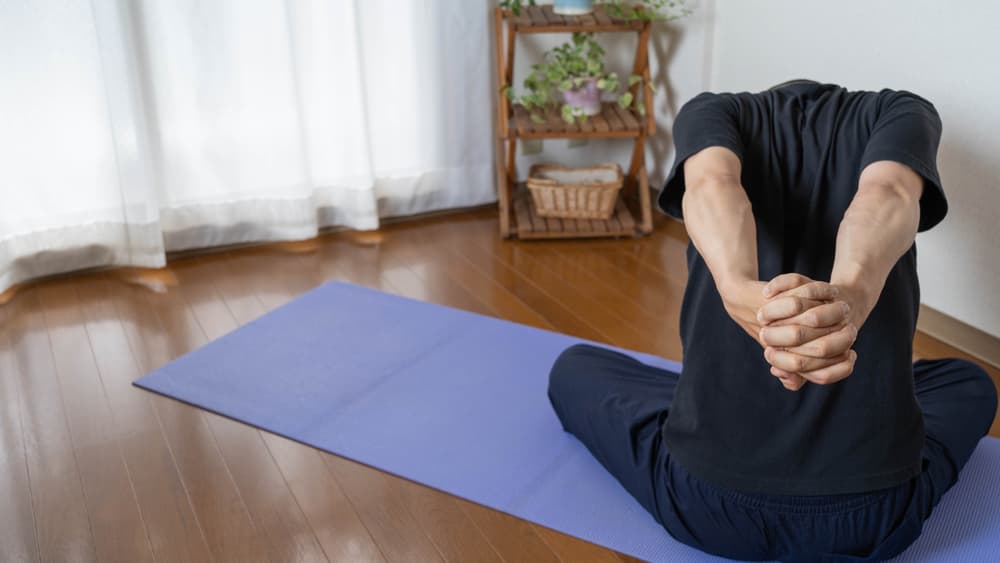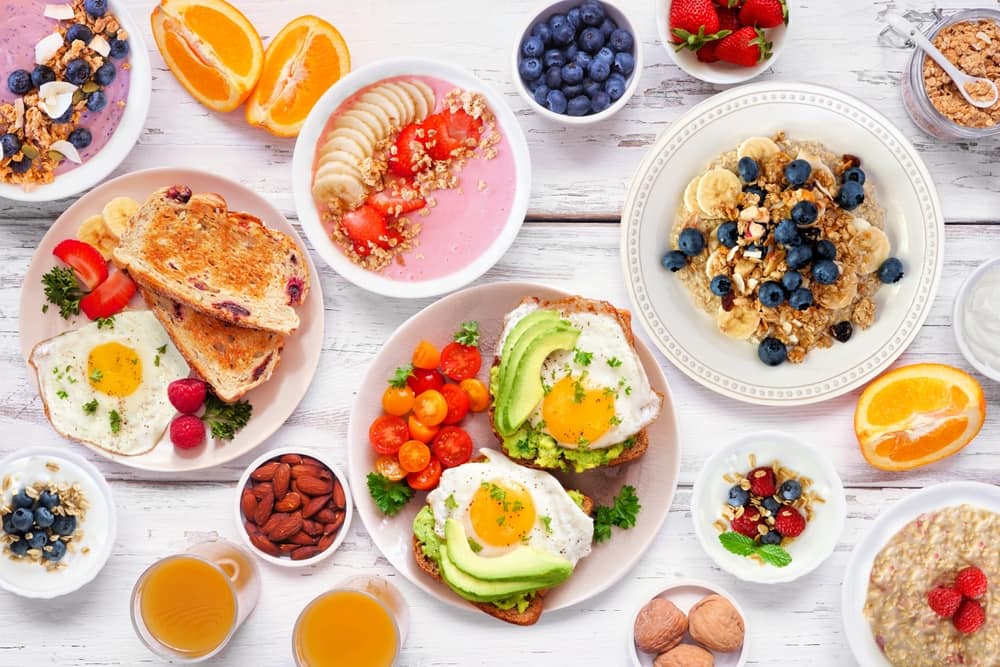Cold Lunch Ideas for Busy Weekdays
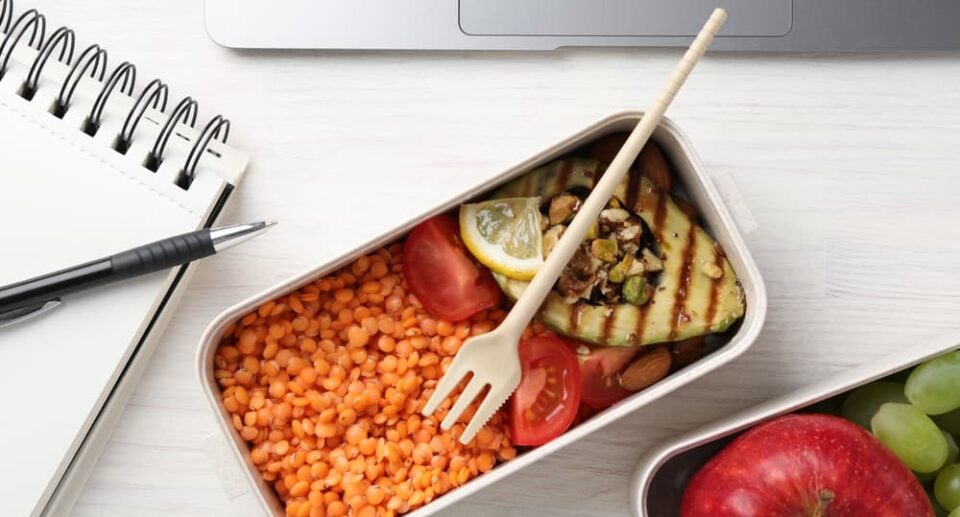

Cold Lunch Ideas for Busy Weekdays choosing a healthy, quick-to-prepare lunch is really challenging in a busy work life. Cooking a hot meal every day and taking it to the office or outside is often not possible. So cold lunches are an innovative solution that saves time, provides nutrition, and at the same time maintains food variety. Easy to prepare, can be prepped in advance, and can be eaten on the go, which is why cold lunch options are becoming increasingly popular among busy people. This guide contains all the cold lunch ideas that are delicious, nutritious, and will make your life easier on a busy weekday.
Harvard Health says that the lunches you prepare in advance (meal prep) should be made up of fiber, protein, complex carbohydrates, and healthy fats.
Importance of Cold Lunches
Cold lunches or ready-made meals are essential for busy days. Its main advantage is time saving. You don’t have to wait for it to heat up in the office or in between work so that you can make good use of your lunch break or lunch time.
Benefits:
1. Time-saving and accessible: Cold lunches such as sandwiches, salads, or pasta salads can be easily prepared and kept the night before. It can be packed in a quick bag and devoured during lunch.
2. Healthy option: The tendency to buy or order unhealthy food from outside is reduced. You can ensure the nutrition of your food with healthy ingredients prepared at home.
3. Nutritional balance: Cold lunch preparations usually use fresh fruits, vegetables, proteins (such as boiled eggs or meat), and grains (such as quinoa or pasta), which provide the body with the necessary nutrients and energy.
4. Less hassle: Since there is no need to heat it, there is no need to look for a microwave in the office or workplace. It can be eaten sitting anywhere, which increases work flexibility.
Easy Cold Lunch Ideas
Greek Flavor Combo
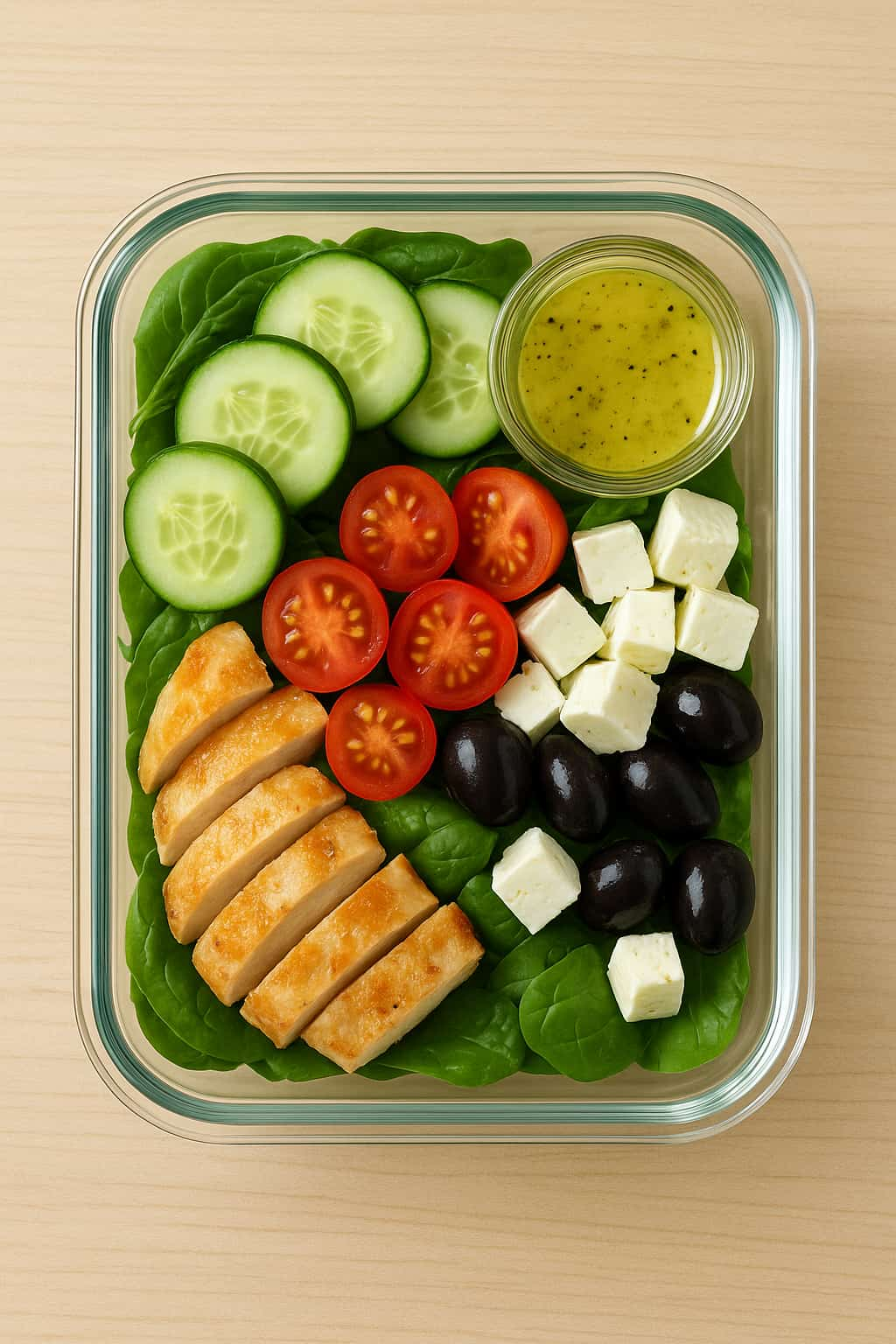

Ingredients: Lettuce leaves or spinach, cucumber, cherry tomatoes, diced feta cheese, and black olives.
Dressing: Olive oil, lemon juice, salt, and pepper.
Protein: Boiled or grilled chicken or tofu.
Mediterranean Chickpea Combo
Ingredients: Boiled chickpeas (chickpeas), coriander leaves, chopped onion, grated carrot, and bell pepper.
Dressing: Sesame or tahini sauce, a little vinegar, and ginger paste.
Fiber/Grain: Lightly cooked quinoa or cannoli beans.
Apple-Walnut Combo
Ingredients: Greens, apple slices, walnuts, and a little blue cheese or paneer.
Dressing: Honey and a little mustard dressing.
Protein: Roasted turkey or boiled egg slices.
Always pack the dressing in a separate small container and mix it with the salad just before eating, which will keep the salad fresh.
Wraps and Roll-Ups
Classic Veggie-Hummus Wrap
Ingredients: Flour or wheat tortilla. Place a layer of hummus or cheese in the middle. Top with spinach, grated carrots, bell peppers, and long cucumber slices.
Pros: Great for vegetarians, packed with protein (hummus) and fiber.
Chicken Caesar Roll-Up
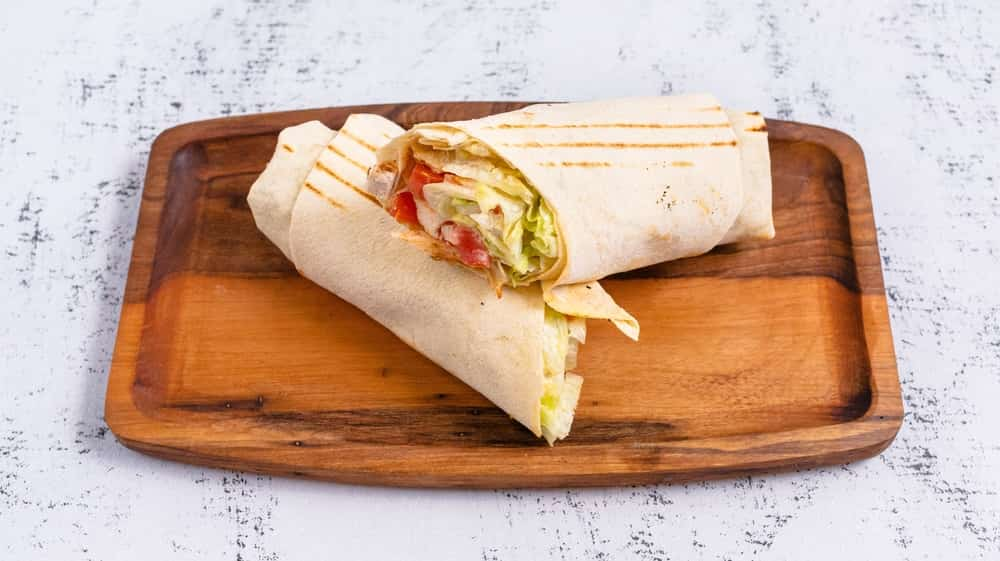

Ingredients: Caesar dressing (in small amounts), diced cooked or grilled chicken, and shredded lettuce on a tortilla.
Pros: A great way to get a quick protein boost for meat lovers.
Mexican Black Bean Roll-Up
Ingredients: Spread cream cheese or avocado on a tortilla. Top with cooked black beans, corn, a little salsa, and a little cilantro.
Pros: Delicious and high in fiber.
Tip: When making the wrap, place the filling on one side of the tortilla rather than in the middle; this will make it easier to wrap. Roll the wrap tightly and wrap it in plastic foil or wax paper to prevent it from unraveling.
Best Cold Lunch Ideas for Work
Protein-Packed Meal Prep
Chicken and Quinoa Bowl
This is a complete meal that provides both protein and fiber.
Protein: Grilled or boiled chicken breast (cut into cubes).
Grain (Base): Boiled quinoa or brown rice.
Vegetables: Boiled broccoli, roasted sweet potato, or raw cucumber and carrot.
Dressing: Light vinaigrette made with lemon juice, a little olive oil, and herbs.
Egg and Black Bean Salad
This is ideal for vegetarians or those who avoid meat. Eggs and beans are a good source of protein.
Protein: Boiled egg (chopped) and boiled black beans.
Ingredients: Corn, chopped bell pepper, onion, and a small amount of avocado.
Dressing: A little Greek yogurt, lemon juice, salt, and pepper.
Tip: This can also be used as a filling for bread or wraps.
High-Protein Pasta Salad
Pasta salads are easy to make and are best served cold.
Protein: Canned tuna or tofu (cubed).
Base: Whole wheat pasta such as fusilli or penne.
Vegetables/Flavors: Cherry tomatoes, black olives, and fresh basil.
Dressing: Pesto sauce or a mixture of Greek yogurt and ranch dressing.
Prep Tips:
Keep dressings separate: Never mix dressings before refrigerating food. Mixing dressings can make salads or grains soggy. Always pack dressings separately in a small container.
Cooking Together: Boil or cook quinoa/rice and eggs/chicken together on Sunday.
Low-Carb Options
Lettuce Wraps
This is an excellent alternative to bread. Use lettuce leaves instead of tortillas or bread.
Base: Large lettuce leaves (such as romaine or butter lettuce).
Filling: Tuna salad, egg salad, or spicy minced chicken/tofu.
Flavor: Salad made with mayonnaise, Greek yogurt, or a little hot sauce.
Chicken and Vegetable Skewers
This food is very accessible and easy to carry on a stick.
Protein: Boiled or grilled chicken or cheese (cubes).
Low-carb vegetables: Cherry tomatoes, cucumber, green and yellow bell peppers (Capsicum).
Fat: Small balls of olive or mozzarella cheese.
Dressing: Serve with a little pesto sauce or olive oil.
High-Fat Protein Box
This is a ‘snack-style’ lunch, with no cooking required.
Ingredients: Hard-boiled eggs, slices or cubes of cheese (such as cheddar or mozzarella), a few nuts (such as walnuts or almonds), and a few slices of salami or turkey.
Vegetables: Small tomatoes or celery sticks.
Zucchini Noodle Salad
Use noodles made from zucchini or cucumber instead of pasta or noodles.
Base: Zucchini or cucumber cut into noodles with a spiralizer.
Protein: Shrimp or flaked salmon.
Dressing: Lemon and olive oil dressing.
Good Cold Lunch Ideas for Adults
Vegetarian Selections
Lentil/Chickpea Salad
Lentils and chickpeas are a great source of protein, filling a lunch without making it too heavy.
Ingredients: Boiled lentils or chickpeas, chopped cucumber, tomato, coriander, and red onion.
Dressing: Lemon juice, a little olive oil, cumin powder, and a little chaat masala.
Pros: Can be made in advance and keeps its flavor for a few days.
Paneer or Tofu Veggie Bowl
This is a balanced bowl lunch.
Protein: Cubed paneer or firm tofu (lightly fried with a bit of spice and cooled).
Base: Lettuce or Cabbage Slaw.
Additional ingredients: Raisins, seeds (such as sesame or sunflower seeds), and bell pepper.
Dressing: Green chutney or mint-coriander dressing.
Mediterranean Pasta Salad
This is much fresher and healthier than traditional pasta.
Grain: Whole wheat pasta or orzo.
Ingredients: Feta cheese, sunflower or olive slices, and sun-dried tomatoes.
Protein addition: Add boiled kidney beans or kidney beans for extra protein.
Global Flavors
Asian Peanut Noodles
This delicious Thai-inspired noodle salad is best served cold.
Base: Boiled rice noodles or spaghetti (cold).
Ingredients: Julienne carrots, bell peppers, cabbage, and fresh cilantro.
Protein: Tofu or cooked chicken pieces marinated in soy sauce and ginger.
Dressing: Peanut butter, soy sauce, a little honey or maple syrup, and lemon juice.
Falafel and Tabbouleh Bowl
This is a combination of some popular Middle Eastern dishes, which are rich in fiber and fat.
Base: Tabbouleh salad made with diced cucumber, tomatoes, lots of parsley leaves, and lemon juice.
Protein: Pre-made falafel or chickpea/bean tikkis.
Dressing: Thick yogurt or tahini sauce.
Tip: This mixture can also be eaten as a roll-up in pita bread.
Southwest Chicken/Black Bean Bowl
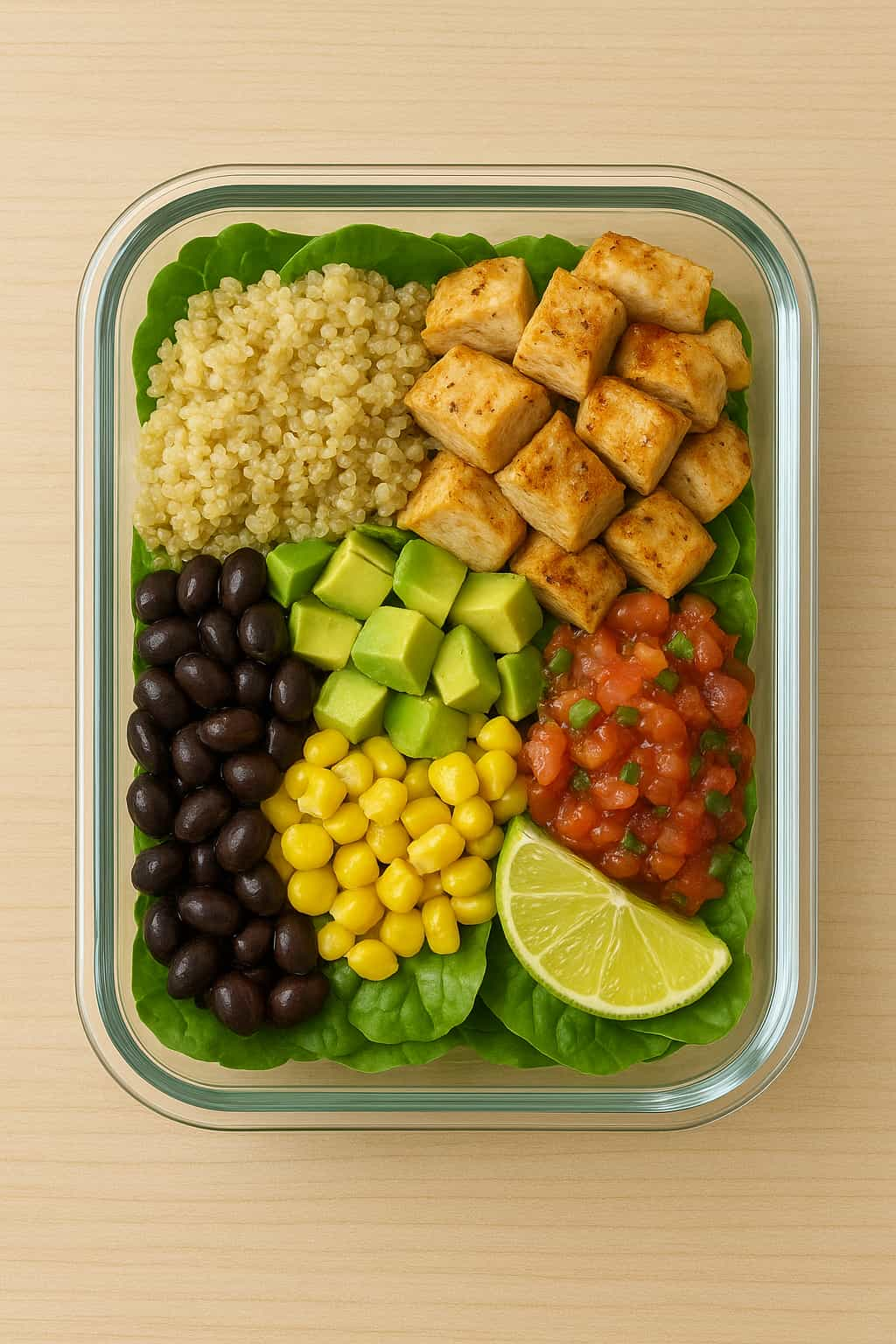

This lunch bowl with Mexican and Southwestern flavors is very colorful and delicious.
Base: Cooked quinoa or lettuce leaves.
Ingredients: Cooked black beans, corn, diced avocado, and salsa.
Protein: Seasoned boiled or grilled chicken or extra-cooked chickpeas.
Dressing: Lime juice and a little olive oil.
Cold Lunch Meal Prep Tips
Efficient Packing Strategies
Prevent Sogginess
This trick is the most important to prevent the main ingredients of a salad or sandwich from getting soggy.
Keep dressings separate: Never mix salad dressings or sandwich sauces with the main ingredients. Pack it separately in a small dressing container or a small ziplock bag.
Wet ingredients below: When packing a mason jar salad, put the dressing first, then the hard vegetables (carrots, cucumbers), then the protein/grains, and top with the vegetables and cheese.
Cage making: When packing a sandwich or wrap, spread a thin layer of light cheese, butter, or mayonnaise on the bread or tortilla. This creates a barrier between the bread and the wet filling.
Choosing the right container
The correct container keeps your lunch safe and organized.
Bento boxes: Bento boxes with compartments are great for keeping different ingredients separate. This helps keep salads, dressings, and snacks all together.
Airtight glass containers: These containers keep food fresher for longer and don’t absorb odors.
Reusable Foil: Wrap or roll them tightly, then wrap them in aluminum foil or butter paper so they don’t come undone easily.
Temperature Control
Keeping food cold is also a part of packing, especially if your office doesn’t have a refrigerator.
Insulated Bag: Pack your lunch box in an insulated lunch bag.
Ice Pack: Place a small ice pack (or a bottle of water in the fridge) in the bag. This will keep your food fresh and cold until lunchtime.
When Packing
Pack your food only when it’s completely cold. Putting hot food in containers can cause condensation, which can make the food soggy.
Containers and Tools
Essential Containers
Compartmented Bento Boxes: These boxes are handy. They help you keep different ingredients like salad, dressing, and snacks in the same box, but separate, so the food doesn’t mix.
Airtight glass containers: These keep food fresh for a long time, are easy to clean, and do not absorb odors. They can also be stacked in the refrigerator.
Mason jars: These are best for the salad layering technique. Putting the dressing on the bottom, followed by the softer vegetables, prevents the salad from getting soggy.
Small dressing containers: These are essential for packing salad dressings, sauces, or chutneys separately. Choose containers with leak-proof lids.
Wrap foil or butter paper: These are used to tightly wrap sandwiches or roll-ups so that the food does not come undone.
Prep tools
Sharp knife and chopping board: A good knife and a sturdy chopping board are essential for chopping vegetables quickly and safely.
Measuring cups and spoons: These are needed for making dressings and packing the right amount of food.
Vegetable Spiralizer: Those looking to make low-carb salads can use this tool to cut cucumbers or zucchini into noodles.
Egg Slicer: This is very useful for quickly and evenly slicing boiled eggs.
Temperature Control Tools
Insulated Lunch Bag: This helps keep lunch cold for a long time by maintaining the temperature inside the bag.
Reusable Ice Packs: These small ice packs keep food fresh and cold until lunchtime when you put them in your lunch box.
FAQ
Q. What are the best cold lunches for busy weekdays?
Chicken salads, tuna bowls, quinoa-bean bowls, hummus veggie boxes, and egg or chickpea salads are quick, filling, and stay fresh.
Q. How can I keep my cold lunch fresh longer?
Use an insulated lunch bag with ice packs, pack dressings separately, and store everything in airtight containers.
Key takeway Cold Lunch Ideas for Busy Weekdays
Cold lunches are a time-saving and healthy option for busy days that help you avoid unhealthy foods. The discussion covered a variety of lunch ideas, such as salad and grain bowls, easy-to-carry wraps and roll-ups, and healthy protein-rich (like chicken, chickpeas) and low-carb options. Vegetarian and international flavors (like Asian noodles and falafel) were also included for variety. Effective packing techniques are essential to keeping food fresh; this includes keeping dressings separate, using layering techniques to prevent soggy food, and using the right tools like compartmentalized bento boxes, mason jars, and insulated bags.
If you want to create a weekly lunch plan using these ideas, let me know.




